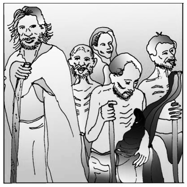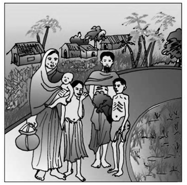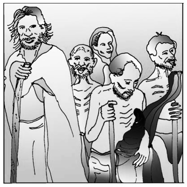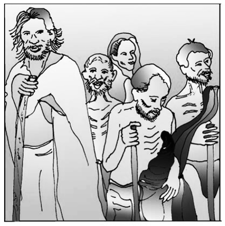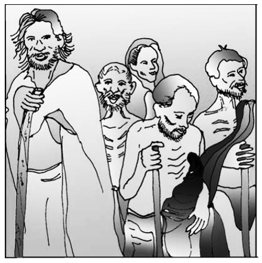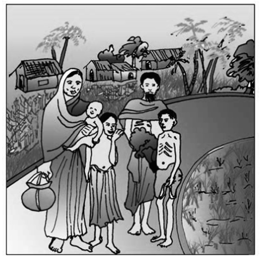People living in economically backward states with a high incidence of poverty, tribal and remote areas, regions more prone to (Food insecurity/exploitation).
Important Questions on Food Security in India
A family of four members in Delhi was settled in a slum and earning enough income to lead a subsistence life. They were migrants from a Bihar village in search of employment. During the COVID lockdown, they managed to be in Delhi with the support of philanthropists and the local government. However, they decided to go back to Bihar. They had enough money to buy food for another ten days. The family decided to travel to Bihar by walk or through whatever transport service they could get. During that travel, the family had to stop in various towns and villages for food and shelter. The family could not get enough food in most of the places because:
(a) restaurants were closed.
(b) in some places, the distribution of food was made only for the local residents.
(c) after nearly ten days to travel, the family did not have enough money to pay for food.
How do you classify these reasons as food insecurity?
In a farmer’s household in West Bengal, all the adult members were involved in the activities of the household’s own farm. The household could earn enough income to lead a life with basic necessities of life and little savings to meet emergency expenditures. Last year, the eldest son, aged years, was bedridden for almost a year due to a serious illness. Hence, he could not participate in the household’s farming activities. However, the income of the household from agriculture did not decline.
How do you call generally the employment of the eldest son on the household’s farm?
I. Landless people always have food insecurity.
II. Those who do not have enough nutritious food are food insecure.
III. Those who have enough food but not the requisite nutrition are food secure.
IV. Those who do not have enough purchasing power to buy sufficient food are food insecure.
Which year shows a drastic decline in food availability?
|
Year |
Production (Lakh tonnes) |
Imports (Lakh tonnes) |
Exports (Lakh tonnes) |
Total Availability (Lakh tonnes) |
|
- |
- |
|||
|
- |
||||
|
- |
||||
|
- |
||||
|
- |
||||
|
- |
Can you imagine the source of livelihood of the people, (shown in two pictures) before the occurrence of famine? (In the context of a village).
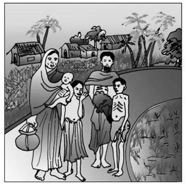
Some people say that the Bengal famine happened because there was a shortage of rice. Study the table and find out whether you agree with the statement?
|
Year |
Production (Lakh tonnes) |
Imports (Lakh tonnes) |
Exports (Lakh tonnes) |
Total Availability (Lakh tonnes) |
|
- |
- |
|||
|
- |
||||
|
- |
||||
|
- |
||||
|
- |
||||
|
- |
Which age group is seen in the picture?
What do you see in the picture?
Can you say that the family shown in the picture is a poor family? Why?
Find out what type of help is given to the victims of a natural calamity at a relief camp.
